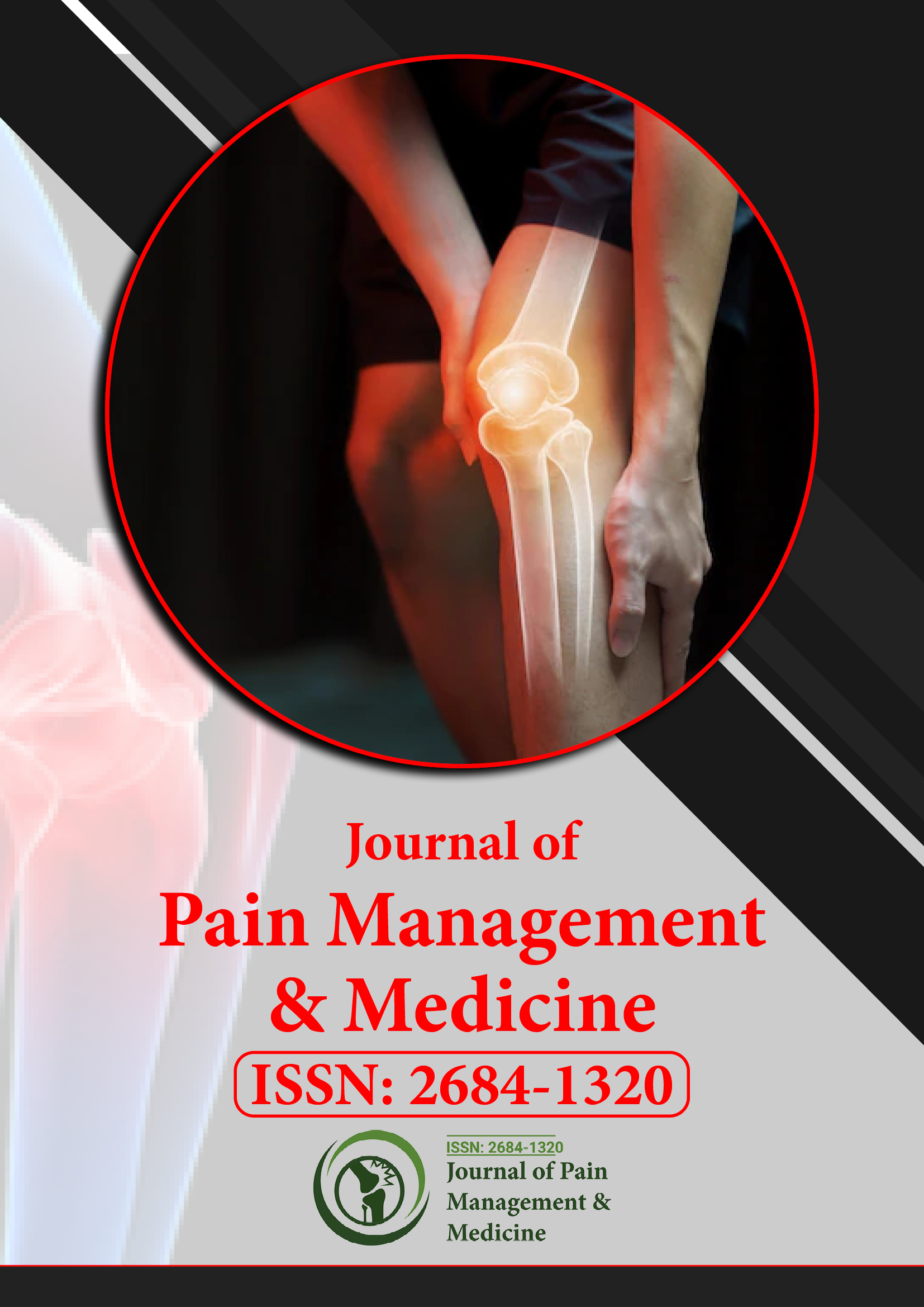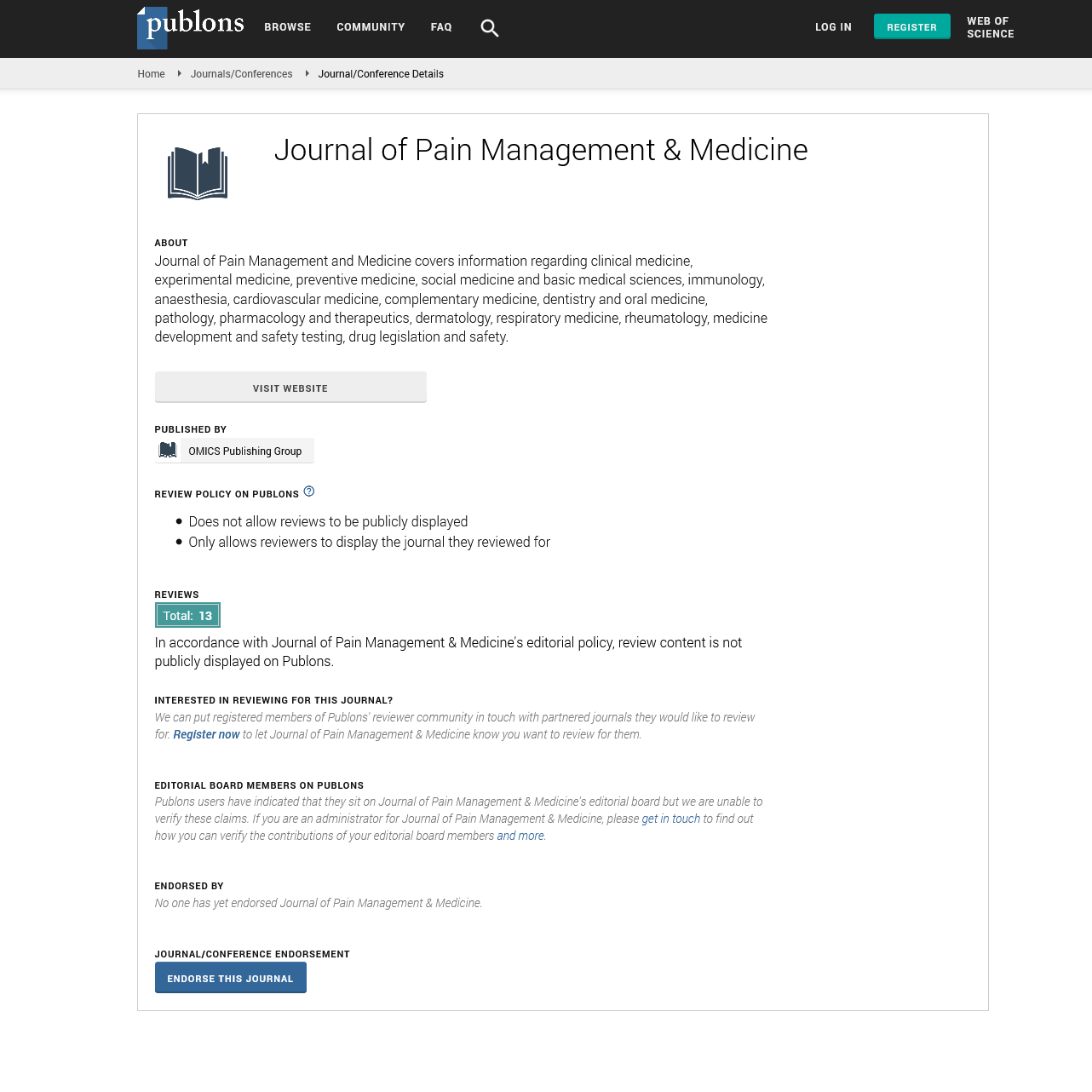Indexed In
- RefSeek
- Hamdard University
- EBSCO A-Z
- Publons
- Euro Pub
- Google Scholar
- Quality Open Access Market
Useful Links
Share This Page
Journal Flyer

Open Access Journals
- Agri and Aquaculture
- Biochemistry
- Bioinformatics & Systems Biology
- Business & Management
- Chemistry
- Clinical Sciences
- Engineering
- Food & Nutrition
- General Science
- Genetics & Molecular Biology
- Immunology & Microbiology
- Medical Sciences
- Neuroscience & Psychology
- Nursing & Health Care
- Pharmaceutical Sciences
Commentary Article - (2024) Volume 10, Issue 6
Mechanism of Muscle Hyperalgesia and Its Symptoms
Marcella Oliveira*Received: 28-Oct-2024, Manuscript No. JPMME-24-27641; Editor assigned: 30-Oct-2024, Pre QC No. JPMME-24-27641 (PQ); Reviewed: 13-Nov-2024, QC No. JPMME-24-27641; Revised: 20-Nov-2024, Manuscript No. JPMME-24-27641 (R); Published: 29-Nov-2024, DOI: 10.35248/2684-1320.24.10.305
Description
Muscle hyperalgesia is a condition in which the muscles are more sensitive to pain. It can result from injury, chronic conditions or as part of a chronic pain syndrome. This heightened sensitivity frequently impacts daily activities and significantly impacts quality of life. Hyperalgesia refers to a hyperbolic pain response to a difficult electrical stimulation. When this occurs in muscle tissue, it is called as muscle hyperalgesia. Unlike typical pain responses, hyperalgesia represents a pathological amplification of pain signals, generally resulting from changes in the nervous system.
Muscle hyperalgesia can manifest in two forms: Primary hyperalgesia and secondary hyperalgesia. Primary hyperalgesia occurs at the area of injury or inflammation, where nociceptors (pain receptors) become hypersensitive. Secondary hyperalgesia occurs in surrounding or seperated areas due to changes in the Central Nervous System (CNS). This condition is a common feature of various musculoskeletal disorders and it can occur independently or in combination with systemic pain syndromes such as fibromyalgia or myofascial pain syndrome.
Causes and mechanisms of muscle hyperalgesia
Muscle hyperalgesia can develop from a combination of peripheral and central mechanisms.
Peripheral mechanisms: Following injury or inflammation, nociceptors in muscle tissue become sensitized due to the release of inflammatory mediators such as prostaglandins, bradykinin and cytokines. These substances reduce the level of severity for pain signals causing normal muscle movements or light pressure to Cause tremendous pain. Muscle injury causes an immune response that result in the release of chemicals increasing hyperalgesia. Chronic inflammation can sustain this sensitization. Reduced blood flow to muscles (ischemia) can lead to localized pain and hyperalgesia by causing tissue damage and metabolic stress.
Central mechanisms: Persistent peripheral pain can lead to heightened sensitivity in the CNS, amplifying pain signals from the muscles. Overactive pain pathways in the spinal cord and brain contribute to the spread of pain beyond the original injury site. Chronic pain can cause physiological and functional changes in the central nervous system, including abnormalities in the brain's pain-processing regions. Generally, the brain has mechanisms to reduce pain signals. Dysfunction in these pathways can increase muscular hyperalgesia.
Conditions associated with muscle hyperalgesia
Muscle hyperalgesia is frequently an indication of major difficulties with health, including. Acute injuries can lead to localized hyperalgesia as part of the healing process. A chronic pain syndrome characterized by widespread hyperalgesia, regularly includes muscles. Trigger points (knots) in muscles can become hypersensitive, leading to localized hyperalgesia. Patients commonly report muscle hyperalgesia as part of their widespread pain and fatigue. Conditions such as rheumatoid arthritis or polymyalgia rheumatic can cause muscle hyperalgesia due to chronic inflammation. A disorder includes Complex Regional Pain Syndrome (CRPS) generally involve muscle hyperalgesia as part of their symptoms.
Symptoms of muscle hyperalgesia
The primary symptom of muscle hyperalgesia is increased muscular pain, but it can be accompanied by other symptoms. Pain occurs significantly to the intensity of the activating stimulation. Even moderate examination or pressure can lead to severe discomfort. Pain may radiate to other areas, even if they are uninjured. Hyperalgesia may lead to muscle protecting, reduced mobility and dementia caused by physical activity. Chronic pain frequently affects sleep patterns, leading to fatigue and further exacerbation of symptoms. Persistent pain can cause anxiety, depression and reduced quality of life.
Citation: Oliveira M (2024). Mechanism of Muscle Hyperalgesia and it's Symptoms. J Pain Manage Med.10:305.
Copyright: © 2024 Oliveira M. This is an open access article distributed under the terms of the Creative Commons Attribution License, which permits unrestricted use, distribution and reproduction in any medium, provided the original author and source are credited.

